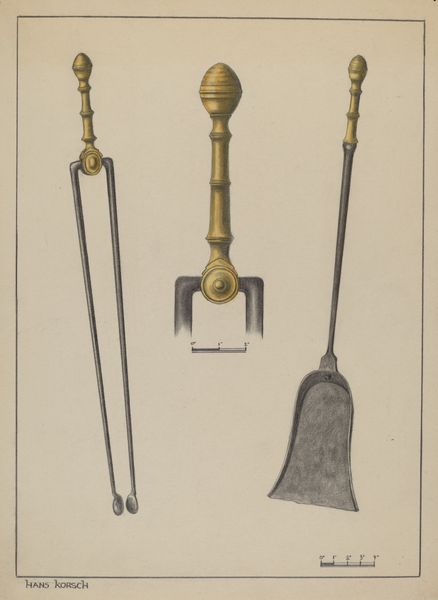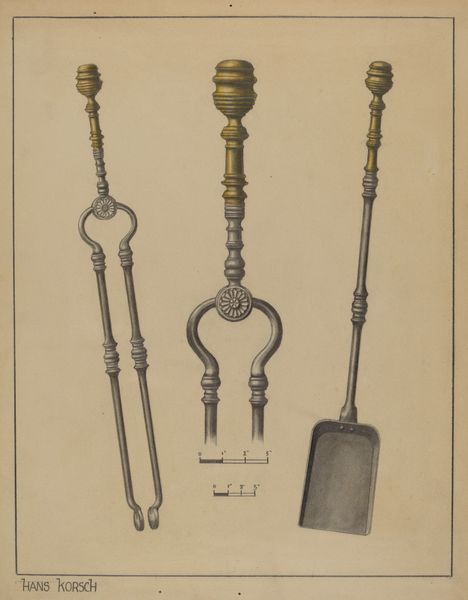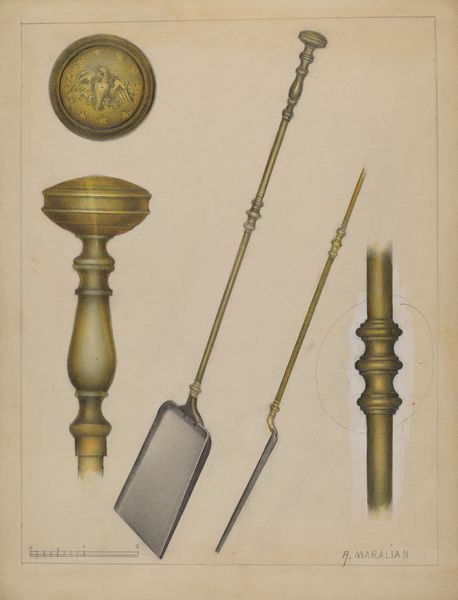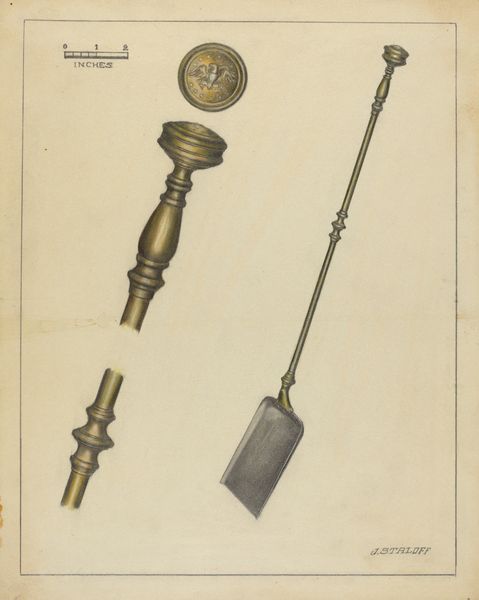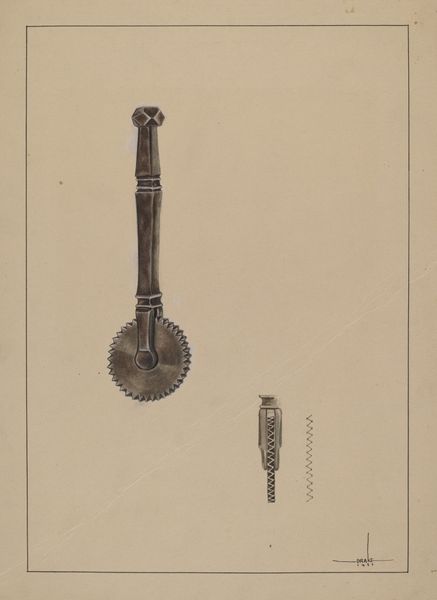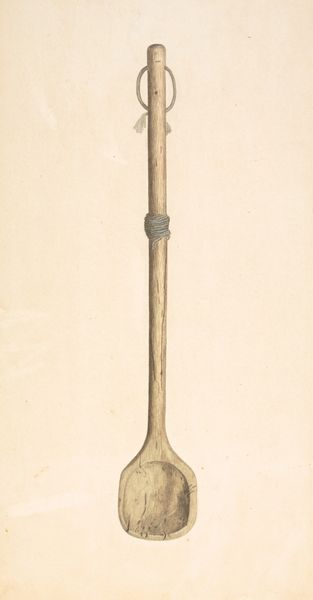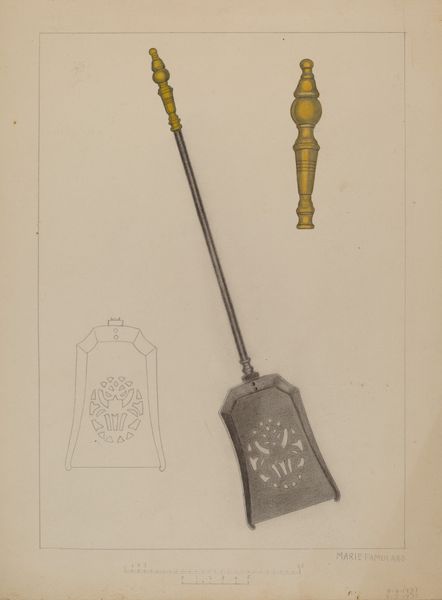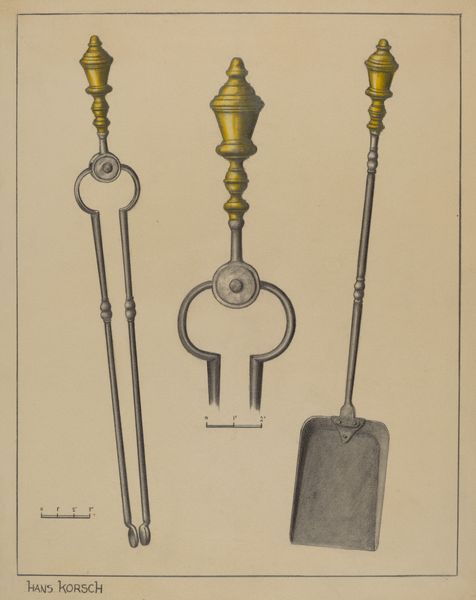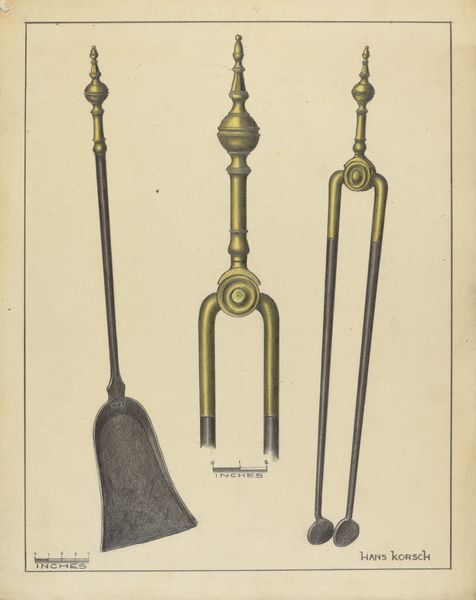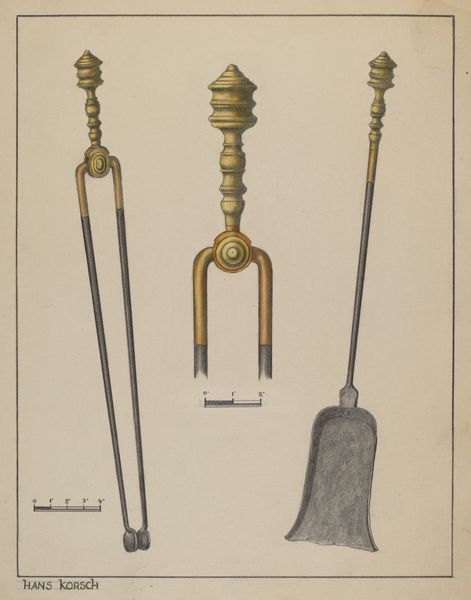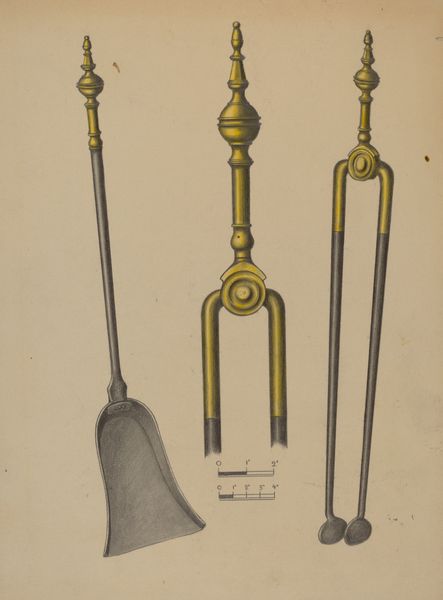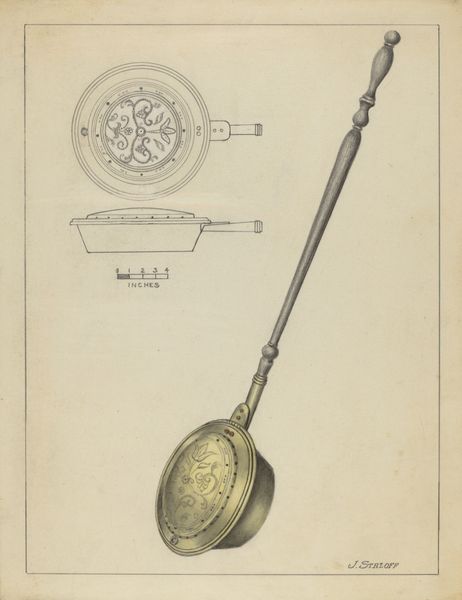
drawing, pencil
#
drawing
#
pencil
#
watercolour illustration
#
decorative-art
#
watercolor
Dimensions: overall: 30.2 x 22.9 cm (11 7/8 x 9 in.)
Copyright: National Gallery of Art: CC0 1.0
Curator: Allow me to introduce Hans Korsch's "Fire Shovel," created around 1937 using pencil and watercolor. My first impression is how meticulously detailed and oddly monumental a seemingly mundane object can become. It has an almost regal quality, wouldn't you say? Editor: Absolutely. The formality of the drawing really elevates the object. It looks more like a scepter than something you’d use to poke at the embers. Even though it’s rendered in these muted pencils and watercolors, there's a sense of contained power, like an ember waiting to burst. Curator: It is interesting you mention the muted tones; fire and gold often speak to great warmth, and wealth, and here there is very little of it. I think of hearths as central to domesticity, places of warmth, family, and storytelling, yet Korsch captures the utensil instead. Perhaps the emphasis is not the tool, but rather what is inscribed within it: an icon. Editor: Yes, precisely! The seal depicted – an eagle surrounded by stars – evokes immediate associations with state and power, repurposed here for a household object. It is a fascinating combination of grand symbolism reduced to a token on a common, working implement. One begins to wonder what else is hidden in plain sight. Curator: The composition too strikes me as meaningful. With its slightly askew vantage point, and that singular beam of light cutting the center handle, the object’s details, particularly the top sphere of the tool, demand closer inspection. It also reads a bit technical, something an engineer might’ve drafted. I get the sense that this person valued utility, yet didn’t compromise on elegant execution. Editor: Right. It almost reads like a design schematic or an artist’s rendering prepared for potential clients, ready to pitch a newly conceived form to upper-class consumers in hopes of revolutionizing their mundane realities. Curator: It reminds us that even the most humble objects can carry deep cultural weight and personal significance, so often overlooked by us today. What we cast away might, someday, teach future generations who we were. Editor: Exactly. Korsch urges us to consider the quiet power of everyday life—how we live, what we use—and how those choices echo into the wider cultural landscape. There is profundity in simplicity.
Comments
No comments
Be the first to comment and join the conversation on the ultimate creative platform.
